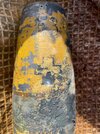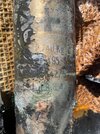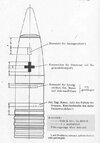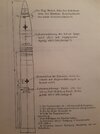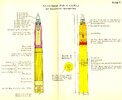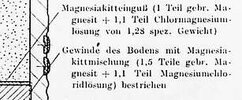British Ordnance Collectors Network
You are using an out of date browser. It may not display this or other websites correctly.
You should upgrade or use an alternative browser.
You should upgrade or use an alternative browser.
German 8,8cm round black cross
- Thread starter fert
- Start date
The explosive charge cardboard container was fixed with Magnesia-cement in the shell. Magnesia cement is a white ceramic-like very hard substance (mixed MgCl2 + MgCO3 prior to reaction). In larger shells it was often used.
The shells were made from steel with different ways of manufacturing but never made from cast iron.
The shells were made from steel with different ways of manufacturing but never made from cast iron.
Last edited:
Paraffin melts at 40-50°C, which is used to define the charge in the cardboard against the wall of the projectile.
a) during firing, the chamber heats up and the temperature is transferred to the projectile.
b) the temperature in the desert definitely exceeds 40 degrees
This will cause the cardboard with explosives to become unstable in the sense of movement (rotation and displacements of the longitudinal axis of rotation). If the block of explosives is sealed (in height) with cardboard inserts, there is less influence. Anyway, at temperature and paraffin, the longitudinal axis of rotation is broken ...
Akon
a) during firing, the chamber heats up and the temperature is transferred to the projectile.
b) the temperature in the desert definitely exceeds 40 degrees
This will cause the cardboard with explosives to become unstable in the sense of movement (rotation and displacements of the longitudinal axis of rotation). If the block of explosives is sealed (in height) with cardboard inserts, there is less influence. Anyway, at temperature and paraffin, the longitudinal axis of rotation is broken ...
Akon
greif
Well-Known Member
The explosive charge cardboard container was fixed with Magnesia-cement in the shell. Magnesia cement is a white ceramic-like very hard substance (mixed MgCl2 + MgCO3 prior to reaction). In larger shells it was often used.
The shells were made from steel with different ways of manufacturing but never made from cast iron.
That is not correct. The black cross indicates the opposite, namely that the explosive charge was pourred directly into the shell body. To separate the pourred-in explosive from the base plug and it’s threading, a layer of magnesiakit was applied. Down below 3 figures, the first one with an inserted cardboard container with explosive charge, the second with pourred-in explosive.
Attachments
Last edited:
"-einguss" means it was "cast into" (should have noticed this difference)
Basically it's the same material but consistency was set up more liquid. The word "Kit" itself describes a consistency between solid and liquid. Normally "Kit" (putty) is to thick for casting. After drying both become as hard as concrete.
Basically it's the same material but consistency was set up more liquid. The word "Kit" itself describes a consistency between solid and liquid. Normally "Kit" (putty) is to thick for casting. After drying both become as hard as concrete.
The old system was built on a sealing ring (Pb) and coupand ,,Numata,,
When the filling laboratory system was changed, the bottom of the projectile (thus also the body of the projectile) was modified and the recess in the bottom part (space for the Pb ring) was replaced with a new flat sealing ring (cardboard, ..) and the thread in the bottom was newly sealed with a two-component coupand and magnesium putty at the bottom of the explosive.
When the filling laboratory system was changed, the bottom of the projectile (thus also the body of the projectile) was modified and the recess in the bottom part (space for the Pb ring) was replaced with a new flat sealing ring (cardboard, ..) and the thread in the bottom was newly sealed with a two-component coupand and magnesium putty at the bottom of the explosive.

